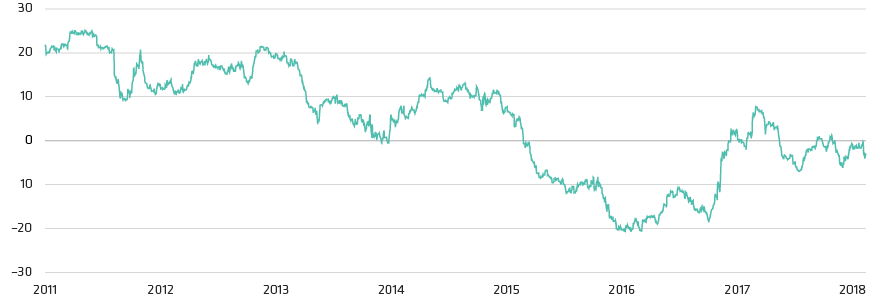-
The views expressed herein do not constitute research, investment advice or trade recommendations and do not necessarily represent the views of all AB portfolio-management teams.
Alternative Risk Premia
Why Diversify Beyond Style?
30 May 2019
2 min read
Event-Driven Has Exhibited Low Correlations with Style Premia
12-Month Roll Correlation

Historical analyses do not guarantee future results.
Through 31 December 2018
Source: AllianceBernstein (AB)
Style Premia Pay off over Extended Periods
Theme Time Horizon Exposure Half-Life (Days)

Historical analyses do not guarantee future results.
As of 31 December 2018
Source: AllianceBernstein (AB)
About the Author
